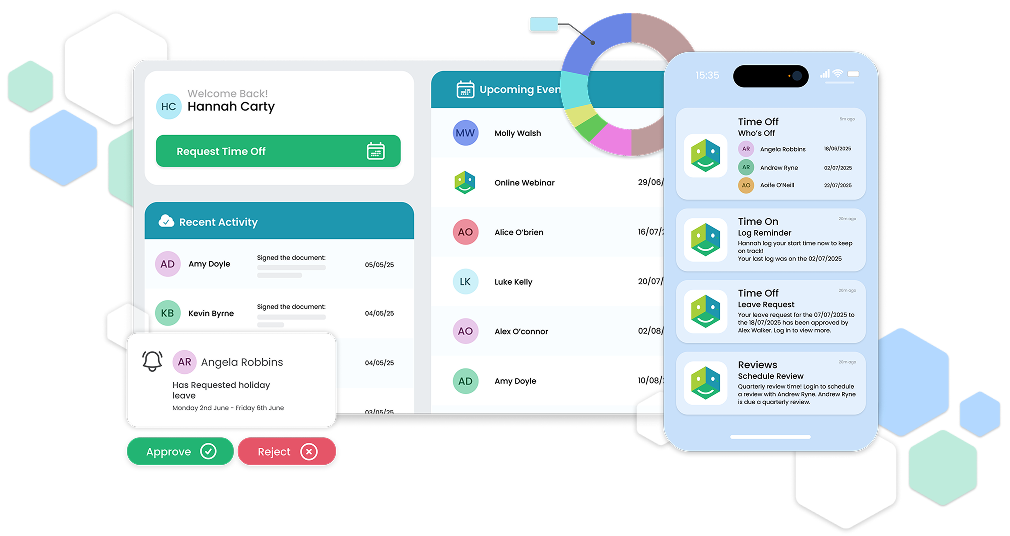Learning and development is a hot topic for employers right now, especially since employees are desperate for new opportunities to grow their skill sets.
In recent years, employers have been leaving their staff to source training courses that pique their curiosity. This might seem like a generous offer from employers, but it can easily turn into the opposite. If their development has no practical application in the business, training can be in vain. And there’s a chance employees will feel disregarded if their development efforts aren’t rewarded. Rightly so!
Self-selected programmes that fail to equip employees with the skills they need to thrive are unfair. And employers end up recruiting for roles they could have filled in-house with targeted training.
From the outside, self-directed development looks like a progressive move, but there are far better ways to structure a learning and development program. With budgets shrinking and the cost of hiring skilled people expanding, companies need to plan their learning and development programmes strategically. And tying them in with succession planning might be the best move yet.
Let’s explore why.
Why Start Planning Now for Future Roles?
Given the dramatic twists and turns of the past few years, you wouldn’t be blamed for thinking that planning is futile. After all, could you have predicted how your company operates now just five years ago?
But highly skilled jobs can’t be taught overnight. And if you want to fill your leadership positions later down the line, having someone prepped and ready will make things so much more seamless.
Future roles might require complex technical skills or advanced soft skills that can’t be taught quickly. If you wait too long, you’ll be cramming heaps of learning and experience into a short period. By constructing a long-term learning and development program, you can cultivate skills at a sustainable pace.

Faced with an ageing workforce that’s soon to be retiring, capturing organisational knowledge and passing it on to the next generation is crucial. Experienced employees have tonnes of learned experience to share, and businesses should put systems in place that ensure this knowledge doesn’t get lost.
What’s more, actively including your existing teams in succession planning could help with retention. Instead of going through the expensive process of hiring externally, you provide fresh opportunities to your internal pool. We already know that people seek employers who prioritise learning and development – so don’t miss the opportunity to satisfy your existing teams.
And last but not least, preparing for future roles now will ensure business continuity in the future. When a leader leaves, you need someone ready to take the reins, especially if they’re in a business-critical function, where a period of no leadership could damage business outcomes.
What Does Succession Planning Involve?
There are three key stages to succession planning:
- Identifying organisational objectives
- Evaluating existing staff in line with those objectives
- Implementing a learning and development programme
Starting with your company objectives, you can deduce which skills and roles will be needed to meet them. Don’t panic if they’re skills and roles you don’t already have in-house – that comes along in the third stage.
By evaluating your existing staff in line with those objectives, you can map the work that needs to be done to get them to the next level. For example, if you know you’re going to have a greater need for data analysis or data analytics skills, you should implement programmes that focus on those skills.
Consider who’s ready and who could be ready in the next few years. Don’t forget that planning for the future, so it’s okay to put people forward who aren’t quite ready yet. Matched with the proper role and a comprehensive learning and development programme, you can get them where they need to be.

Existing employees are already steps ahead of external candidates. They’re familiar with your culture, have formed vital coworker relationships, know what has and hasn’t worked during their time with your business, and have access to company-specific knowledge. All things that can take months – even years – to cultivate when hiring someone new.
With your objectives identified and staff capabilities assessed, you can design a learning and development programme that moves people closer towards those future roles. Instead of self-directed learning options, structuring your development programme in line with organisational goals will help you direct skills and attention towards the stuff that matters.
And your people will still get a say in what they learn. The beauty of succession planning is that you’ll probably need to fill a handful of roles at the company in five or so years. So you still give your people agency over what they learn – you’ll just be narrowing down the options a tad.
Learning and development programmes work best when people are interested in what’s being taught. The easiest way to guarantee this is by providing training for a variety of desirable skills and future roles, so individuals can pursue something that fits them.
Don’t be afraid to adjust your succession planning and development initiatives in line with changing goals. Succession plans should be agile and adaptable, in keeping with modern business. If you identify new skills or roles that could become fundamental to your business, update your succession plan accordingly.
And most importantly: measure progress. If you’re running a three-year programme for your next cohort of department leads, make sure they’re ready to step up to the plate when the time comes.
Learning and development programmes that lack direction aren’t impactful for your business. Succession planning is an opportunity to intercept the challenges of tomorrow, today. With targeted training, you can equip single employees with a library of skills. And serve your future business plans in the process.









